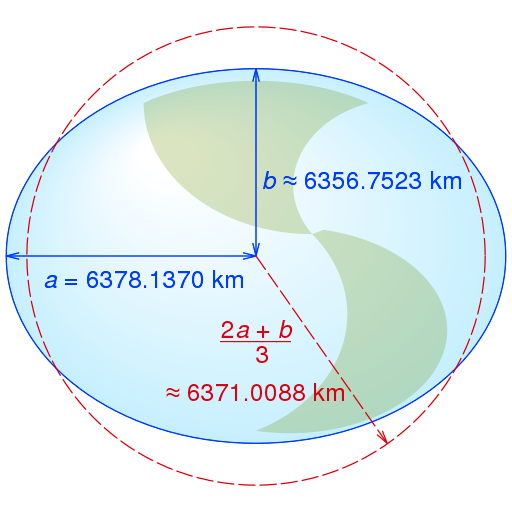It Needs to Rotate once Every Few Seconds.
The formula you want is:
$$\frac{a-b}{b} = \frac{5}{4}\frac{(2\pi/T)^2 R^3}{GM}$$
Where:
$a$ is the (larger) equatorial radius.
$b$ is the (smaller) polar radius.
$T$ is the time for one revolution.
$R = (b+2a)/3$ is the mean radius.
$M$ is the mass of the planet.
$G$ is Newton's constant.
The formula is derived in this thread where it seems to agree with the experimental numbers for Earth. This is good for you because it suggests we can indeed ignore how the planet is denser in the middle. See also Wikipedia and their source [8].
Since you want $a$ much bigger than $b$ we'll just use $R \simeq 2a/3$.
Since $a/b$ is very large we'll also write $\frac{a-b}{b} = \frac{a }{b}-1 \simeq \frac{a }{b} $. The formula becomes
$$\frac{a }{b} = \frac{5}{4}\frac{(2\pi/T)^2 }{GM}\frac{8 a^3}{27}$$
I'm going to ignore the constant factors because the goal is to show the thing has to spin ludicrously fast.
$$\frac{a }{b} = \frac{a^3 }{GM T^2} $$
Let's take $a$ as the 6000km radius of the Earth and $M$ the Earth's mass. In Si units:
$G \simeq 6 \times 10^{-11}\simeq 10^{-11}$
$a \simeq 6000km = 6000 \times 1000 = 6 \times 10^3 \times 10^3 = 6 \times 10^6 \simeq 10^6$
$M \simeq 6 \times 10^{24} \simeq 10^{24}$.
So we get:
$$\frac{a }{b} = \frac{10^{18} }{10^{-11} 10^{24} T^2}= \frac{10^{18} }{ 10^{13} T^2} = \frac{10^{5} }{ T^2}$$
If for example you want the ratio to be 1/100 we need
$$100 = \frac{10^{5} }{ T^2} \implies T^2 = 10^3 \implies T = 10^{1.5} \simeq 32 $$
Meaning one revolution every 32 seconds.
How fast is that?
The equator of the pancake is 40,000 km long. So an ant standing on the rim moves more than 1000km each second. Much zippier than the ISS orbit speed of 10ish km/s but only a measly 0.3% the speed of light.

